Books
Books
published in 2024
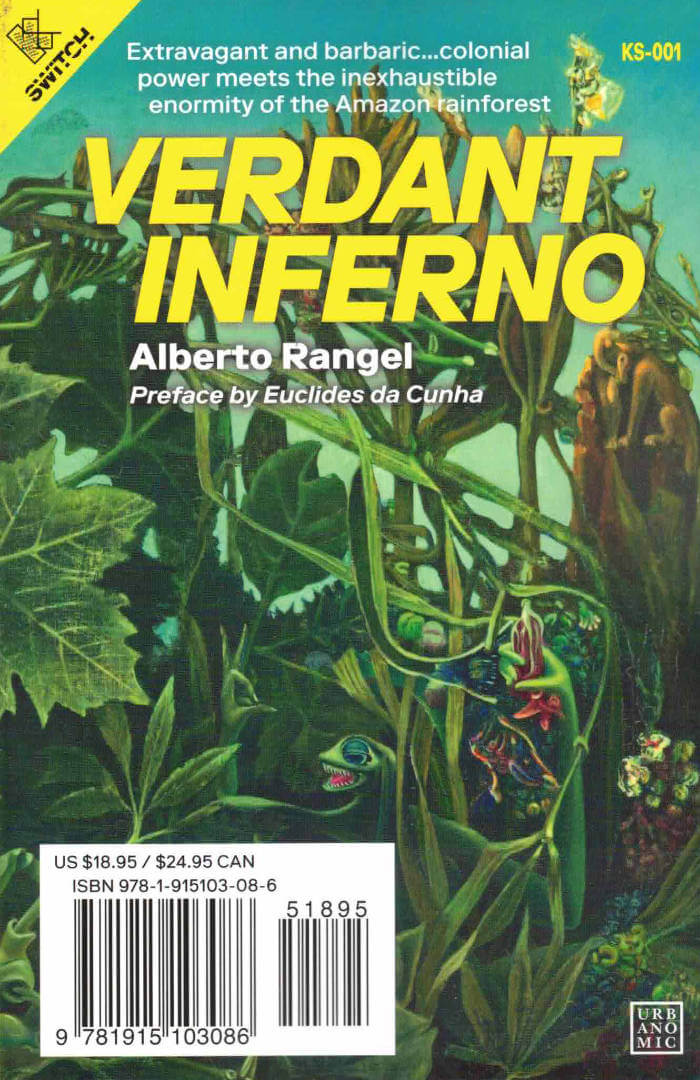
Verdant Inferno/A Scabby Black Brazilian
Alberto Rangel, Jean-Christophe Goddard
A classic of Brazilian literature is twinned with an overheated tract in which tropical delirium swallows up Western philosophy. Both attack the decolonial question with poetic ferocity, ignited by the moment when colonialist rationality meets its limits in the "magnificent disorder" of the Amazon jungle.
Described in Eduardo Viveiros de Castro's foreword as "no longer an interpretation of Brazil but an interpenetration with Brazil," Jean-Christophe Goddard's strange theory-fiction plunges Western philosophy into the great American schizophrenia, where its ordered categories are devored by uncontainable contaminations—first and foremost the rainforest itself, a "monstrosity unapproachable by the cogito."
In 1664, the Portuguese Bento de Espinosa wrote of his terrifying hallucination of "a scabby black Brazilian." But rather than a vision of "the Other," the dream figure was a frightful glimpse of Bento's own duplicity. Upon adopting the "clean white nickname" of Benedict de Spinoza, the philosopher cut ties with his homeland and its colonial misadventures, repudiating this specter that flees along the lines of migration: "Spinoza is American ... the journey is intensive." And in his wake, a cannibalized cast of conceptual personae are sucked into Goddard's Pernambucan delirium: Franny Deleuze, Dina Levi-Strauss, Chaya Ohloclitorispector, Galli Mathias...
The rainforest also precipitates a deregulation of the senses in Verdant Inferno, Alberto Rangel's classic 1904 work of Brazilian literature. In Rangel's astonishing tales, this "poet-engineer" sent into the dark interior as a state representative records his encounters in a style that shimmers between objective documentary and visionary limit experience.

A Rage in Harlem – June Jordan and Architecture
Pennsylvania State Senator Nikil Saval tells the story of an unlikely partnership between June Jordan and R. Buckminster Fuller, and their attempt to reimagine Harlem in the wake of the 1964 riots.
In the tense days leading up to the 2020 American elections, design critic and then-candidate for Pennsylvania State Senate Nikil Saval addressed a virtual audience at the Harvard GSD to tell a story about Black feminist writer June Jordan and a little-known project that resulted from the aftermath of the 1964 Harlem riot. The events of police brutality and community grieving made a lasting impression on Jordan, who, while known for her work as a poet, playwright, and activist, responded with a proposal for a multiple-tower housing design. Through an unlikely partnership with R. Buckminster Fuller, Jordan's "Skyrise for Harlem" project offered a Futuristic vision for Harlem that argued for environmental redesign: "it is architecture, conceived of in its fullest meaning as the creation of environment, which may actually determine the pace, pattern, and quality of living experience." Jordan was not an architect in the conventional sense, Saval says. "But in the understanding of someone who sought to propose and build interventions in public space, she was."
Nikil Saval (born 1982) is an Indian-American magazine editor, writer, organizer, activist, and politician, member of the Democratic Party.
Foreword by Sarah M. Whiting.

Spike #78 – The Night
Winter issue, featuring Mark Leckey, Ellen Cantor, Gertrude Stein, Piotr Uklański, P.Staff, Josephine Pryde, Blackhaine, Diego Marcon, Ingrid Wiener, Olivier Assayas, Jamieson Webster, Steven-Phillips-Horst...
Spike's latest issue is a beacon lit to rescue The Night. Long held under suspicion as the domain of outcasts and phantoms, the night has come under pressure to extend the horizon of work and production.
What faith, the state, and capital fear are the perils and promises of the dark's formlessness: to withdraw into the pure solitude of sleep and dreams' unreason; to blush with the pure elation of dance and a rave's ephemeral friendships; even to have one's edges undone by the murmurs of ghosts or a celestial sign.
Need a break from the tyranny of the sun? Then light a candle, a headlamp, a flare – anything but your phone – and grap your copy to follow us into the possibility of the night.

mnemotope issue 003
This thrid edition of mnemotope magazine features pieces from contributors that range from playlist, recipes to poetic essays to drawings to private messages to a screenplay and beyond.
Mnemotope is a community magazine, published by bog bodies press. Mnemotope magazine takes this as its inspiration-it acts as a place in which lots of stories from across timelines and borders can sit together, and cultural memories can interact. It exists to create and hold the expression and knowledge of its diverse community, because of this, the contents of the magazine are wonderfully varied; some confessional poetry, some hastily notated recipes, some fiction, some history, lots of other things, all submitted during an open call. The format put spreads together of contributions that seem to somehow be in dialogue with one another.
The name of the magazine comes from a term that's used in writings about archaeological finds - it's a little complex when we speak about it abstractly, so take, for example, a bog body. A bog body is an object, but when we look at one it takes on another function as an image. This image is the part beyond the physicality of the object-it's what makes us think about what the world must have been like when this person was walking on it, what they looked like, what they did, who found them, how much the area they were found in must have changed and so on and so on and so on. A mnemotope is something that compresses time, and allows you to be in the bog two thousand years ago and in the museum looking at the body and at home reading about it all at once.
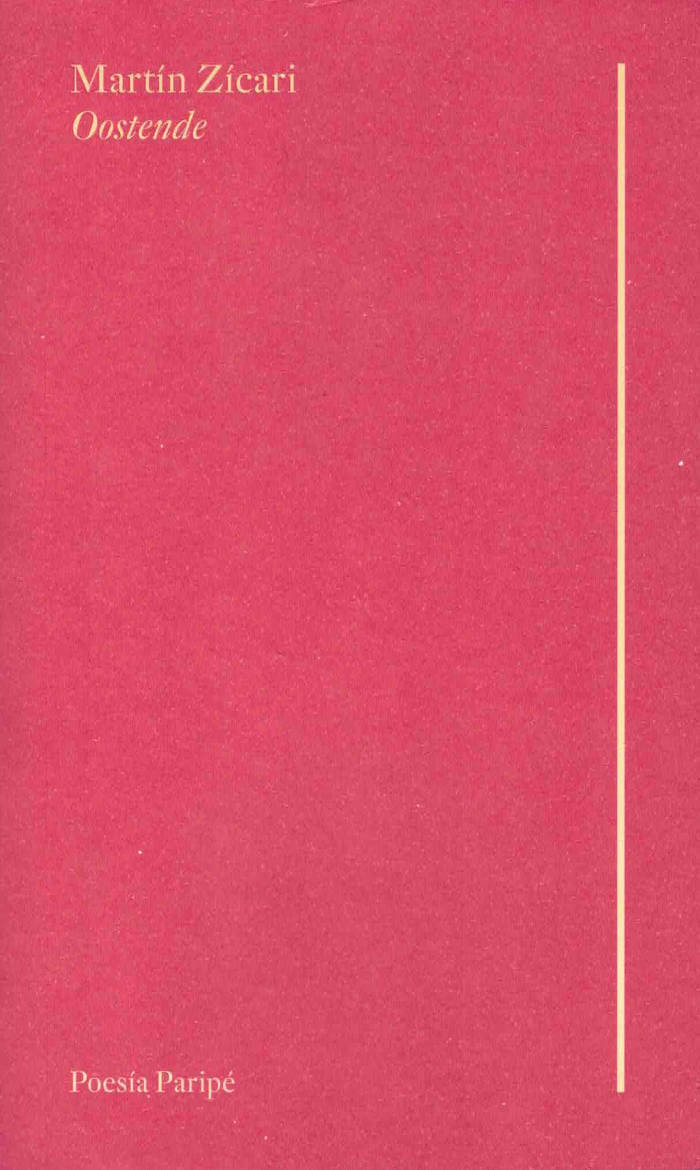
Oostende
Oostende is a book about displacement and the sometimes-overwhelming internal monologue we live with. In between poetry, diary and novel, the book reflects on Zicari’s life in Buenos Aires and Belgium, as he navigates work fragility, friendship, sex and love, migration and the fiction laying behind everyday actions and life changing decisions.
Zícari's portrayal of his private life is far from the domain of the concrete, instead he ventures into the uncontrollable production of fantasies that sustain his inner discourse. It is around this dichotomy between the real and the imaginary, the tension between the experienced and the illusion, that Martín Zícari builds a book sustained in orality and proximity.
Martín Zícari, PhD, is a writer and producer based in Brussels. He has published poetry collections such as "Oostende" (Paripé Books, Madrid, 2023), "Del Príncipe Azul al Hombre Invisible en una Semana" (Editorial Municipal de Rosario, Argentina, 2018), and "Pequellpu" (LUMA Foundation, Switzerland, 2015), as well as the short novel "Scalabritney" (Entropia, Argentina, 2014), among others. His research has been featured in scientific journals such as Performance Research, Memory Studies, and the Journal of Latin American Cultural Studies.

The (Fair) Kin Arts Almanac
The Fair Kin Arts Almanac is made with the voices of more than 130 artists, writers, and activists spinning their thoughts and experiences into 12 chapters around a year. Surprising perspectives, recipes, sound practices, and reflections around ecology, parenthood, the need to rest in a life that never stops, the urgency for space and infrastructure for artists, redistribution of resources, accessibility of the sector, artistic involvement in politics and much more.
The FAIR KIN ARTS ALMANAC is a circular book, filled with perspectives, recipes, astrological wisdom, ideas, games, proposals and in depth reflections around topics of social political relevance. For the Arts and beyond.
The book was edited by a team of 13 editors that in turn each worked with artists, art workers, writers and academics. Chapters range from politics, making space, education, parenthood, accessibility, ecology, mutuality, rest, migration, redistribution, property & open source and relationality.

Greasepaint
Set against a backdrop of 1950s New York, this experimental novel follows an ensemble cast of all-singing, all-dancing butch dykes and Yiddish anarchists through eternal Friday nights, around the table, and at the bar.
In one of many bars, Frankie Gold sings while Sammy Silver plays piano after a day job at the anarchist newspaper. The Butch Piano Players Union meets in the corner next to the jukebox. Laur smokes on the back steps, sweaty thigh to thigh with Vic. Frankie's childhood sweetheart, Lily, turns up at yet another bar to see a second Sammy play every Friday night. And before all that, there's always dinner at Marg's. Fabulated out of oral histories, anthologies, as well as the fiction of the butch-femme bar scene and Yiddish anarchist tradition, Greasepaint is a rollicking whirlwind of music and politics—the currents of community embodied and held inside the bar.

Martin Wong: Footprints, Poems, and Leaves
Self-published in 1968, Footprints, Poems, and Leaves collects dozens of poems written by Martin Wong between 1966 and 1968. Hand-written in a signature calligraphic style that he was just beginning to develop, the poems ebb and flow visually across the page, much like the fluctuating characters, scenes, and moods that inhabit them. This was Wong’s first book of poetry and it contains a double cover showcasing intricate drawings of skeletal angels and other tableaux, as well as a folded, looseleaf broadsheet containing two poems and a drawing of a boney leaf.
The poems were written during a relatively free period for the artist, shortly after he dropped out of Berkeley and began exploring San Francisco at the height of the hippy movement. The poems range from surrealist and pastoral descriptions of the urban subculture that surrounded him to downtrodden, travel-weary biographical entries that are both lonely and tender. Footprints, Poems, and Leaves functions like a journal capturing Wong’s tumultuous life in this period, which included being arrested at a queer, drug-fueled house party (along with Rudolf Nureyev and Dame Margot Fonteyn) and a stay in a mental institution in late 1967 and early 1968. Around the time of the book’s publication, Wong enrolled in Humboldt State University to finish his degree, beginning a new chapter for the artist.
Despite the dark backdrops of many of the works, the writing displays a playfulness with form and language and a sense of humor that can be seen throughout Wong’s later work as well. Altogether, Footprints, Poems, and Leaves creates a rich tapestry of visual poetry that is both a product of its time and the budding artistic mind of a young Martin Wong.

Darkening Blackness: Race, Gender, Class, and Pessimism in 21st-Century Black Thought
The concept of Afropessimism does not refer to Black people, but rather to the likelihood of white society overcoming its own negrophobia, and to a radical distrust in white narratives of inclusivity. What if the ideas and reforms we regard as progressive were just the new and shiny face of racism? In the time of Black Lives Matter, the unswerving dehumanization and killing of Black people form the bedrock of our civilization. But a vast anti-Black collective feeling also manifests itself as a more insidious shared unconscious, hidden from view by the doctrines we deem as emancipatory. This book challenges the simplistic and pacifying aspects of current African American thought. It puts forward alternatives to intersectionality, poststructuralism, and radical democracy, which are often prioritized in the Black analysis of race, gender, and class.
Accessible, historically informed, and politically alert, this book offers a critical analysis of the groundbreaking theories and strategies that radically reimagine the future of Black lives throughout the world.
Norman Ajari is a lecturer in Francophone Black Studies at the University of Edinburgh.

Wrong Norma
Published here in a stunning edition with images created by Carson, several of the twenty-five startling poetic prose pieces have appeared in magazines and journals like The New Yorker and The Paris Review.
As Carson writes: “Wrong Norma is a collection of writings about different things, like Joseph Conrad, Guantánamo, Flaubert, snow, poverty, Roget’s Thesaurus, my Dad, Saturday night. The pieces are not linked. That’s why I’ve called them ‘wrong.’”

Mandible Wishbone Solvent
Brooklyn-based poet Asiya Wadud's fifth collection of poetry, Mandible, Wishbone, Solvent, engages migration, climate change, race, sexuality, and art-though not necessarily in that order-with a dynamic urgency and graceful restraint held in balance by a deep literary investment in the historical aesthetics of abstraction.
Punctuated by images of Wadud's own original art, the poems and prose of Mandible, Wishbone, Solvent offer an indirect meditation of the concepts of the drift ("Embedded in the act of drift can be the prior commitment or desire against drifting") and the isthmus ("An isthmus is a passageway, a threshold, underbrush, thicket, and deliverance"). Wadud constructs a latticework through which language circulates and creates new patterns that probe the natural world's edges, fissures, gaps, and seams. Further, the lyric poems suggest a relationship between speaker and environment that yearns to invert or dissolve the subject-object divide, creating instead an isthmus that joins and allows a drifting between them.
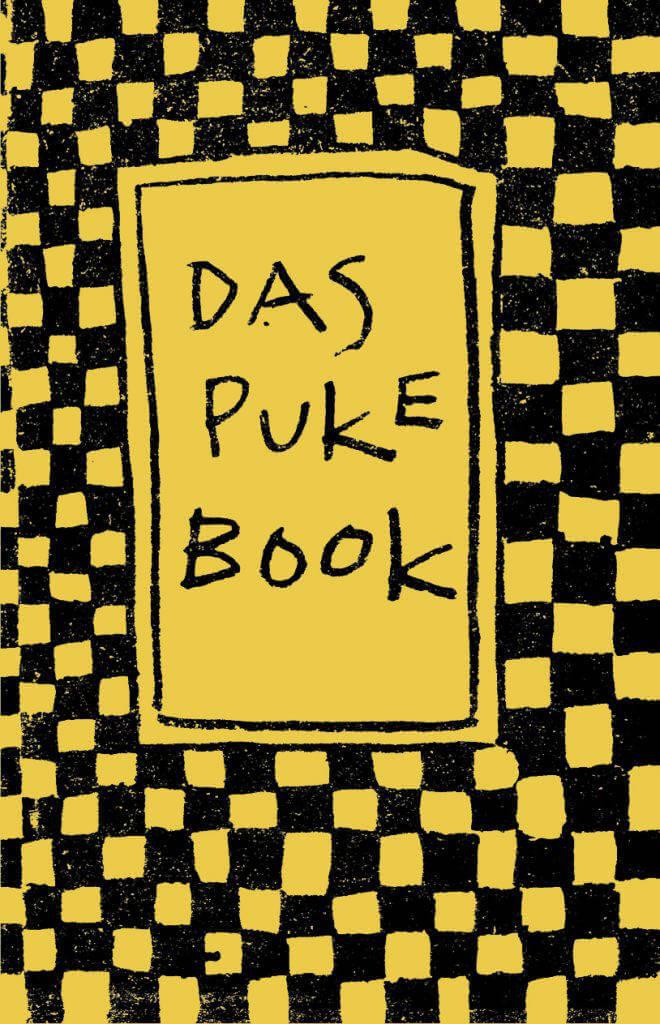
Martin Wong: Das Puke Book
Das Puke Book is a small chapbook self-published by Martin Wong in 1977. Written in the early 1970s, the publication contains thirteen chapters of handwritten micro-fictions filled with cringeworthy stories unfolding in San Francisco and beyond.
Subtitled Da Otto Biography of Otto Peach Fuzz, the publication is populated with a cadre of colorful characters, some of who are obscure underground figures such as George “Hibiscus” Harris from the Cockettes and Angels of Light and Rodney Price and Debra “Beaver” Bauer from Angels of Light, while others such as Paul Gauguin, Vincent van Gogh, and God, are more well known. Although lighthearted, Wong paints unforgettably vivid scenes, such as Van Gogh attacking Gauguin with a razor, Beaver eating so many hot dogs she explodes, and God coming to San Francisco only to find a notebook that makes him so sick to his stomach that he vomits endlessly until the world ends. Written during his days working on the flyers and theatrical backdrops for the Angels of Light Free Theater and published just before his move to New York, these stories capture Wong’s playfulness and the absurdist, kaleidoscopic milieu of the moment in which they were written.

Who Are You Dorothy Dean?
The first book devoted to the late African American writer and actress, Dorothy Dean, one of the few prominent African American women of New York City's bohemian heyday, close to Andy Warhol and Robert Mapplethorpe.
This second release from Éditions 1989 features Dorothy Dean's unpublished writing and selected correspondence with Edie Sedgwick, Rene Ricard, and Taylor Mead, among other friends and artists. This volume also includes Dean's transcendent script of an unrealized film starring Factory actor, Ondine.
Lyrical, humorous, political, and brutally honest, Who Are You Dorothy Dean? is a tribute to one of the few prominent African American women of New York City's bohemian heyday.
Dorothy Dean (1932-1987) was an African American writer and actress. She entered the 1960s New York underground scene and quickly became one of its key, if overlooked, figures, starring in six of Andy Warhol's films and inspiring the likes of Robert Mapplethorpe and Robert Creeley. Presumably the first woman ever hired as fact-checker at The New Yorker, Dean held brief editorial and proofreading positions at publications such as Vogue before launching her very own bulletin of film reviews, the All-Lavender Cinema Courier, in 1976.
Edited by Anaïs Ngbanzo.
Texts by Dorothy Dean, Edie Sedgwick, Robert Creeley, Gerard Malanga, Rene Ricard, Taylor Mead, et al.
Translated from the English (American) by Rachel Valinsky.
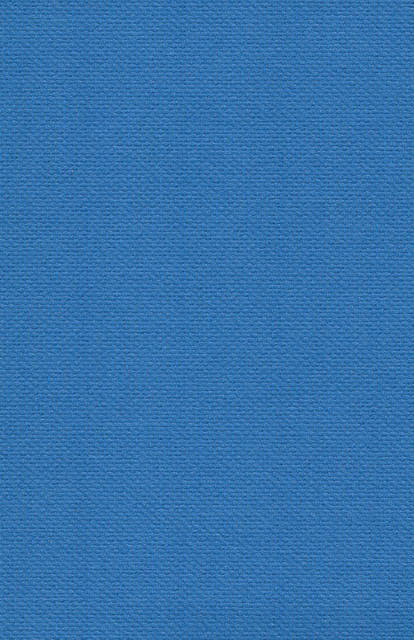
yksihW kcalB
The 15-year history of the production of a "German scotch" Black Whisky, made by Dexter Sinister together with Stahlemühle, a distillery set up by former publisher, Christoph Keller.
The story is told in reverse, starting with the delivery of 342 bottles to Berlin in 2022, and ending with an interview with Christoph for the journal Dot Dot Dot in 2007, during which the idea began to germinate. A summary of the project is accompanied by photographs taken at the time, interspersed with five previously published texts (an essay, three conversations, and a statement of intent) written along the way.
Dexter Sinister is the compound name of David Reinfurt and Stuart Bailey, collapsing together distinctions of editing, design, production and distribution into one efficient activity.

Zona Festival
This book traces the legacy of Zona, Eastern Europe performance art festival that took place in Timișoara, Romania, between 1993 and 2002, years which were marked by a transition from communism to a new society built on different principles.
Bringing together artists from the former "Eastern Bloc," Zona became a space of encounters, a platform for theoretical discussions and postmodern art experiments, which displayed a remarkable diversity of artistic languages. The fall of the Berlin Wall, as Nicolas Bourriaud noted in his book "The Radicant", was the first decisive step towards globalization and the generalization of postmodern thought.
In the early 1990s, adopting subversive strategies helped artists overcome critical moments in totalitarian societies, which had been consolidated for decades in Eastern Europe. They combined techniques of expression such as pastiche, quotes, historical images, popular culture, or subcultures with personal mythologies. What resulted was often a critical mixture with an explosive effect. Body art became an appropriate language for critically analyzing stereotypes about the nation, religion, gender, or social prejudices and taboos. Body art facilitated the transfer of ideas and a dialogue with the audience, or it helped launch questions about identity politics. The concerns and intentions of the festival's protagonists were built around political, social, and artistic topics that were debated between the East and the West.
Essays by Ileana Pintilie, László Beke, Vladimir Bulat, Robert Fleck, Alexandra Titu, Berislav Valušek; artists' texts by Alexandru Antik, Matei Bejenaru, Ștefan Bertalan, Geta Brătescu, Oskar Dawicki, Ion Grigorescu, H.arta Group, Karen Kipphoff, Liliana Mericioiu, Dan Perjovschi, Lia Perjovschi, Sorin Vreme.

Burn & Gloom! Glow & Moon!
Retrospective monograph: a journey through over two decades of intersectional and queering practices in film, performance, sculpture, community work, and textiles.
In Daschner's textile-based works, threads are minimal yet highly visible, akin to the pinch needed to wake up from a dream. These works—as well as her collages—merge with her confronting yet inviting image politics: she cuts and pastes stories of love and pleasure, violence and resilience, death and rebirth.
The written contributions reflect on Katrina Daschner as part of a hardworking generation of queer artists and makers who have been responding to the major conceptual shifts and gender upheavals happening in contemporary art since the 1990s, especially in New York and London. They highlight Katrina Daschner's longstanding line of intersectional queer interest that continues to undermine (neo-)liberal, heteropatriarchal conceptions of sexuality, gender, subjectivity, and relationships
Edited by Övül Ö. Durmuşoğlu.
Texts by Amelia Groom, Tim Stüttgen; foreword by Övül Ö. Durmuşoğlu; interviews by Rike Frank.
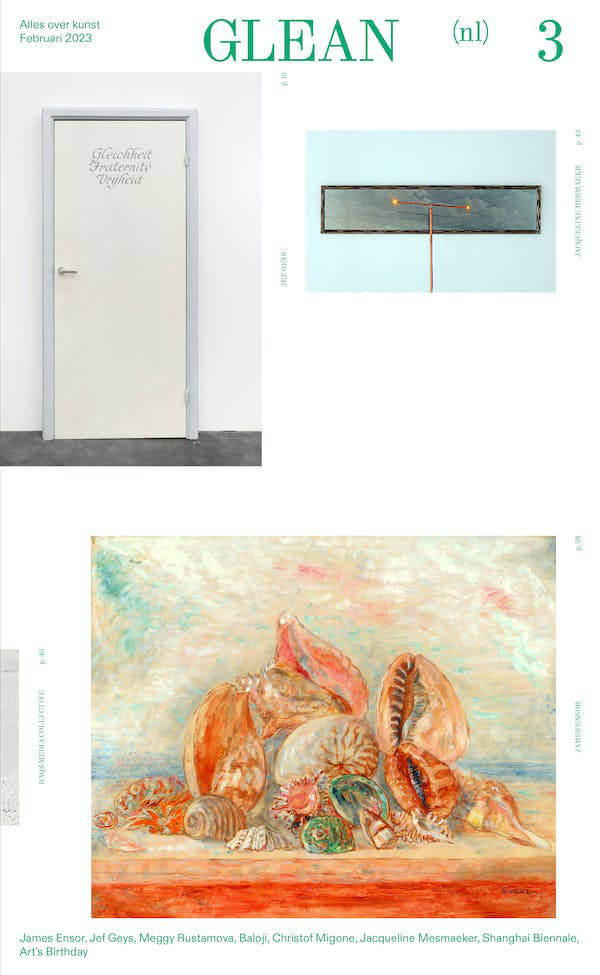
GLEAN - Issue 3 (NL edition)
De derde Nederlandstalige GLEAN editie.
Bijdrages over James Ensor, Jef Geys, Meggy Rustamova, Baloji, Christof Migone, Jacqueline Mesmaeker, Shanghai Biennale, Art's Birthday, en meer.

At the kitchen table
An exhibition guide for a multi-part show conceived by Reliable Copy in India, featuring a range of cookbooks, videos, and artworks around food, by a strong grouping of practices.
Approaching curatorial practice from the perspective of publishing, At the kitchen table looks at how food has historically been—and continues to be—inscribed through various conventional formats, as well as the channels and platforms by which it continues to circulate as material, trace, memory, and culture. Imagined as a show of documents, the exhibition brings together a selection of cookbooks, video works, and artworks.
The selection of cookbooks feature recipes and narratives compiled from artists and art-spaces, anthologies of recipes from literary fiction, cookbooks that function as historical records, and some that are self-published by individuals or community groups. The video works highlight and examine the well-worn format of the instructional cooking class and its associated performativity. Meanwhile, the artworks, which are presented via peripheral, referential, or stand-in documents, respond to (and often assume) the forms of the marketed consumable product, the stand-alone restaurant, the family archive, the recipe book, the menu, the assembly, and the feast.
The proposal, the script, the poster, the photographic documentation, the resource list, the newsletter, the Keynote presentation, and the audio recording—elements that are traditionally left out of the work's exhibition display, but that are often included in catalogues, monographs, or other publications around the work—become stand-ins for the artworks conceptually on display. Through this introduction of artworks via the documents that surround, engender, and represent them, the exhibition seeks to collapse the space between the exhibition and its documentation, the library and the gallery, and the event and its eventual publication.
At the kitchen table is imagined as a travelling, multi-part exhibition that will expand through its responses to the contexts, sites, and venues of its iterations, including those of a publication.
Works by Candice Lin, Carolyn Lazard, Chinar Shah & Nihaal Faizal, David Robbins, Fazal Rizvi, Gavati, Jason Hirata, Lantian Xie, Leone Contini, nonfood, Pushpamala N, Rajyashri Goody, Rasheed Araeen.
Books by Abby Lloyd, Archana Pidathala, Enid Blyton, Esther David, Felicity Dahl & Josie Fison, Filippo Tommaso Marinetti, Happy Potato Press, Mrinalini Bordawekar, Norah M. Titley, S. Meenakshi Ammal, Salvador Dali, Studio Olafur Eliasson, Suresh Jayaram.

Human Pelvis, Bitter Radish
This publication features a project by Leone Contini looking into the canned food available during the war of Caporetto in 1917 and especially its iconography. It brings together an essay by the artist along with reproductions of a selection of his drawings.
Leone Contini (born 1976 in Florence) studied philosophy and cultural anthropology at the University of Siena. His research unrolls at the intersection of anthropology, aesthetics and politics and his mediums include lecture-performances, collective interventions in public spaces, textual and visual narratives, drawings. His research is focused on intercultural frictions, conflict and power relations, displacement, migrations and diasporas, aiming to investigate, to question and to re-shape identity patterns and power relations.
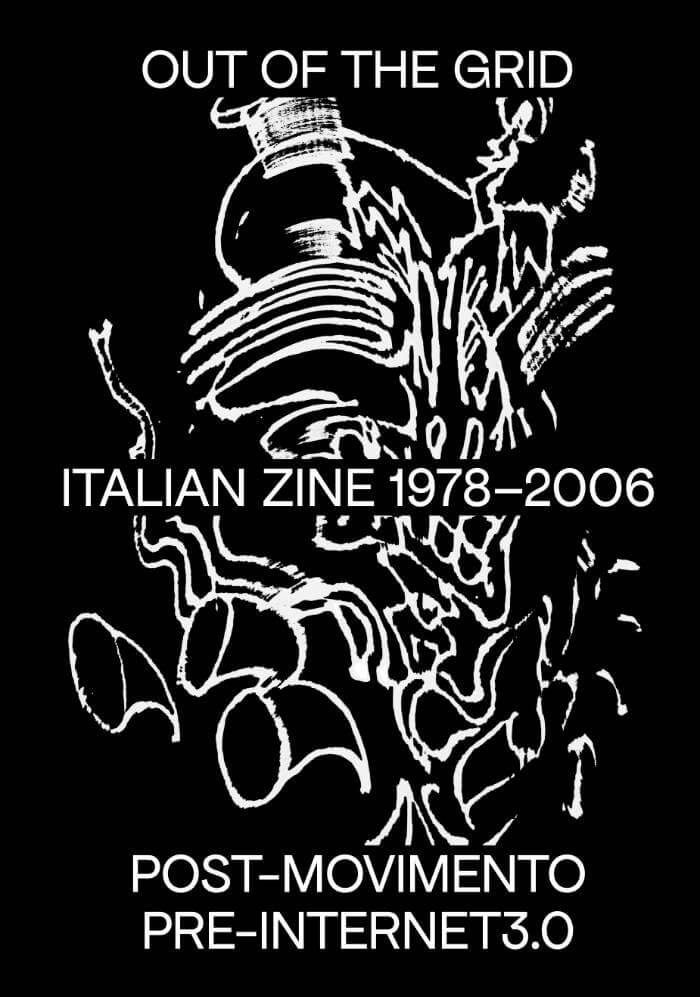
Out of the Grid – Italian Zine 1978-2006
Dafne Boggeri, Sara Serighelli
Out of the Grid presents a critical selection of 100 Italian zines from 1978 to 2006 that display a broad spectrum of social, political, aesthetic, and technological changes in the use of language and communication strategies across the territory of self publishing.
Widely mapping Italian society, particularly youth culture—over an extended period that can be symbolically defined as the "post-movement" and "pre-internet3.0"—, this outpouring of creativity gave visibility to small, imaginative and technical shifts on paper that made mimeographs, photocopiers and offset machines tremble, and often erupted into the need to communicate through other mediums. The titles selected originated from different scenes—musical, social, artistic, literary...—within which the distances between authors and readers is eliminated. To help navigate this multitude of subcultures, each zine is introduced by a profile that provides further analysis and information. No specific structure has been imposed, leaving room for the specific characteristics of each project to emerge. 100 titles ∞ paths.
Contribution by Marta Zanoni; interviews with Dafne Boggeri, Gino Gianuizzi, Stefano Gilardino, Glezös, Fabiola Naldi, Lorenza Pignatti, Pietro Rivasi, Giulia Vallicelli [Compulsive Archive].

The Singularity
The Singularity is a study of grief, migration, and motherhood from one of Sweden's most exciting new novelists.
In an unnamed coastal city filled with refugees, the mother of a displaced family calls out her daughter's name as she wanders the cliffside road where the child once worked. The mother searches and searches until, spent from grief, she throws herself into the sea, leaving her other children behind. Bearing witness to the suicide is another womanon a business trip, with a swollen belly that later gives birth to a stillborn baby. In the wake of her pain, the second woman remembers other losses—of a language, a country, an identity—when once, her family fled a distant war.
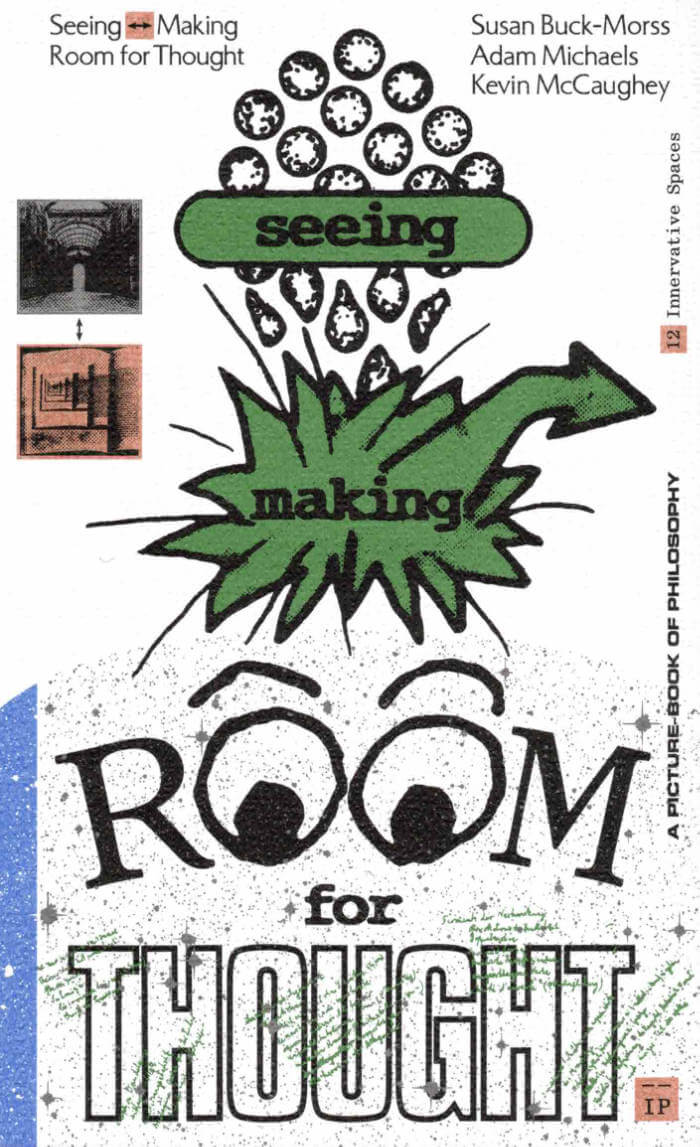
Seeing Making: Room for Thought
Adam Michaels, Kevin McCaughey and 1 more
Seeing <―> Making: Room for Thought both studies and presents the creative process of constructing ideas with images. By activating the techniques of montage, the book reveals a wide field of view and a space to engage new critical connection between a multiplicity of objects from the past and present. Realized through an intergenerational collaboration of three cultural producers committed to making theory visible, a transformative anthology of critical essays by Susan Buck-Morss anchors this kaleidoscopic project. Images and ideas sync with Buck-Morss’ perceptive texts on visual culture, history, politics, and aesthetics, fusing criticism with visual play and linking collective imagination and social action.
Building upon the methods and ways of seeing put forth by visual thinkers like Walter Benjamin and John Berger, designer Kevin McCaughey (Boot Boyz Biz), designer, editor, and publisher Adam Michaels (IN-FO.CO/Inventory Press), and renowned theorist Buck-Morss collectively assemble colliding material into new relation. What results is a (typo-) graphic articulation that thinks seriously about the stakes of ideation and reorients the space of the book in the service of a theory and philosophy that speaks the language of our image-based information age.

Love Is Colder Than the Lake
Searing in its energies and mysterious in its icy depths, Love is Colder than the Lake is a tour-de-force of the experimental French poet Liliane Giraudon's power and range.
Love is Colder than the Lake weaves together stories dreamed and experienced, fragments of autobiographical trauma, and scraps of political and sexual violence to create an alchemical and incantatory texture that is all Giraudon's own. In its feminist attention and allusive stylistic registers, Love is Colder than The Lake claims a unique position among contemporary French literature. The heroes (or anti-heroes) in this collection include Rainer Werner Fassbinder, Lorine Niedecker, Emma Goldman, Chantal Akerman, the Marquis de Sade, and the unnamed lake itself. Giraudon's writing, editing, and visual work have been influential in France for decades, and English-speaking readers will thrill to this challenging, important voice.
Liliane Giraudon was born in Marseille in 1946. She continues to live and work in Marseille, and her writing is inseparable from the place, shaped by the vibrant community of poets and writers and artists Giraudon has herself shaped, as well as by the city's gritty and diverse cosmopolitanism. Giraudon's many books have, since 1982, been primarily published by France's P.O.L. editions. Giraudon has also been instrumental as an editor for influential reviews such as Banana Split, Action Poétique, and If. She performs and collaborates widely, including with Nanni Balastrini, Henri Delui, Jean-Jacques Viton, and many others. Two of her books ( Fur and Pallaksh, Pallaksh) were published in English by Sun & Moon Press in 1992 and 1994, respectively. She lives in Marseille, France.
Lindsay Turner is the author of the poetry collections Songs & Ballads (Prelude Books, 2018) and The Upstate (University of Chicago Press, 2023). She has twice received French Voices awards for her translations from the French, which include books of poetry and philosophy by Stéphane Bouquet, Souleymane Bachir Diagne, Anne Duforumantelle, Ryoko Sekiguchi, and others. She is Assistant Professor of English and Creative Writing at Case Western Reserve University in Cleveland, Ohio.
Sarah Riggs is a poet and multivalent artist. Her most recent book The Nerve Epistle appeared in 2021. Translation is one of her arts, for which she received a Griffin prize with Etel Adnan, and Best Translated Book Award, also for Adnan's Time (Nightboat, 2019). Riggs lives in Brooklyn, after many years in Paris. Author residence: Marseille, France.

Pictograms
A previously unpublished collection of 60 ink pictograms, drawn between 1976 and 1996, originally printed individually as A2 plane prints.
An early progenitor of the artist's book genre, Warja Honegger-Lavater was born in Winterthur, Switzerland in 1913. She worked as an illustrator for the magazine Jeunesse from 1944-1958, and moved to New York shortly thereafter where she began a wonderful series of artist's books.
These books were published between 1962 and 1971, an exceptionally ripe time for artists to turn to the bookform, a time when the most often cited "first" artist's book also appeared, Twentysix Gasoline Stations (1962) by Ed Ruscha.
All of Honegger-Lavater's books are made using the accordion-fold binding. Her aesthetic has been aptly described as "very clean, very Swiss." Each book tells a story, sequentially, like traditional books, but varying from them by rarely using words. Instead she chooses a symbol to represent, for example, a character, as in the red dot standing in for Red Riding Hood in Little Red Riding Hood.